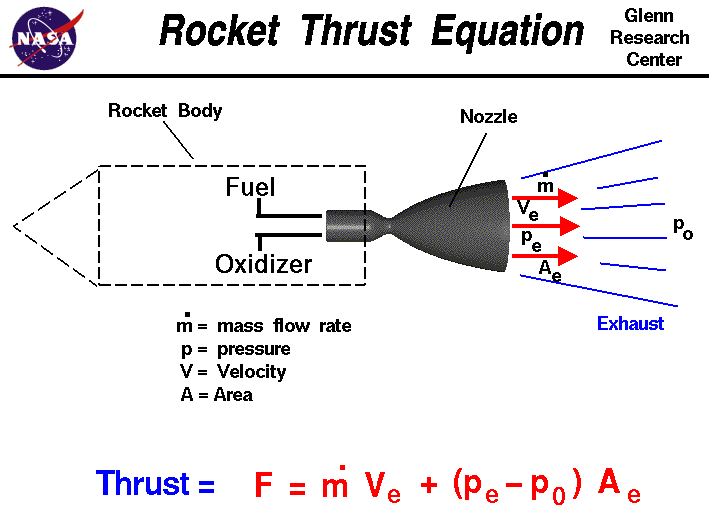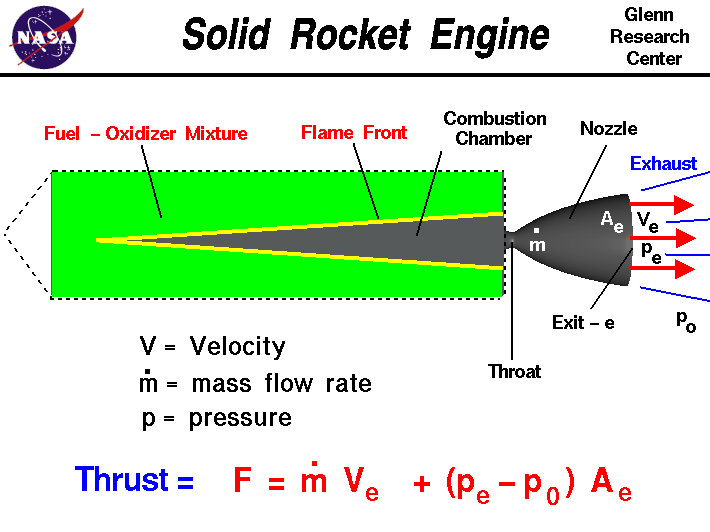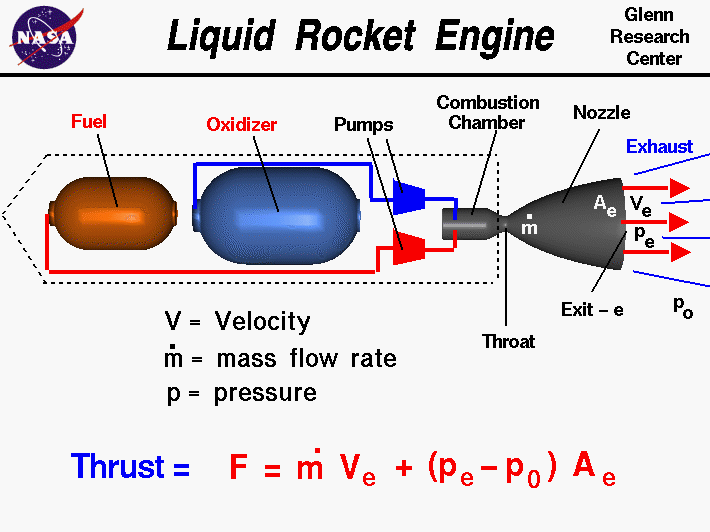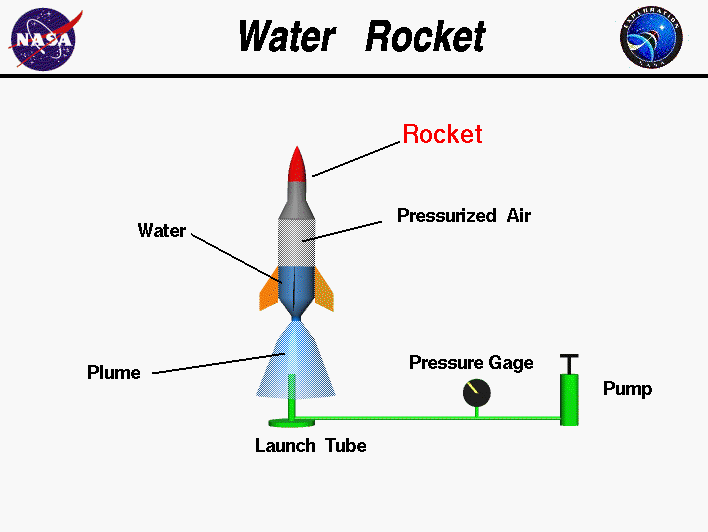Initially,
t=0
The object is at rest,
v=0
Totol Mass: Mass of
Payload,
Propellent (Fuel and Oxidiser) and
Structure (Engine, Frame, Surface)
m(Initial Mass) = m(Payload) + m(Propellent) + m(Structure)
Due to Law of Conversation of Energy,
F = ma
where
m = m(flow rate) and
v = v(exhaust)
As propollent is used to fuel kinetic energy, it's using up fuel and hence mass
Thus mass is a rate over time
(dm/dt)
F = m(flow rate) v(exhaust)
F = - (dm/dt) * v(exhaust)
Note: Negative due to rocket travelling in opp. position to the exhaust
At the
final stage, propellent is used up
m(final state) = m(initial state) - m(propellent
Again, solving in term of Law of Conservation of Energy
Newton's 2nd = F(rocket)
F = m * a , F = - (dm/dt) * v(exhaust)
m(a) = - v(exhaust)(dm/dt)
m(dv/dt) = - v(exhaust)(dm/dt)
Remove dt
m(dv) = - v(exhaust)(dm)
(dv) = - v(exhaust)(dm/m)
Integrate intial to final
v(i)∫v(f) (dv) = - v(exhaust) m(i)∫m(f) (dm/m)
v(f) - v(i) = - v(exhaust) [ln(m(f)) - ln(m(i))]
Remove Negative
Equation
Δv = v(exhaust) [ln(m(i)/m(f))]
For Multistage Rockets consist or
two or
more propellents,
making them
heavier and requiring
more force than single staged rockets.
Initally
t=0
m(intial) = m(payload) + m(structure 1) + m(propellent 1) + m(structure 2) + m(propellent 2)
First Stage
As staged of propellent is used up, they are
detached.
m(1) = m(payload) + m(structure 1) + m(structure 2) + m(propellent 2)
Second Stage
m(2) = m(payload) + m(structure 2) + m(propellent 2)
m(final) = m(payload) + m(structure 2)
Using the
Rocket Equation for Multistage Stage:
Δv = v(exhaust) [ln(m(i)/m(f))]
Δv = v(exhaust) [ln(m(i1)/m(f1)) + ln(m(i2)/m(f2))]
Equation
Δv = v(exhaust) [ln(m(i1)m(i2)/m(f1)m(f2))]




